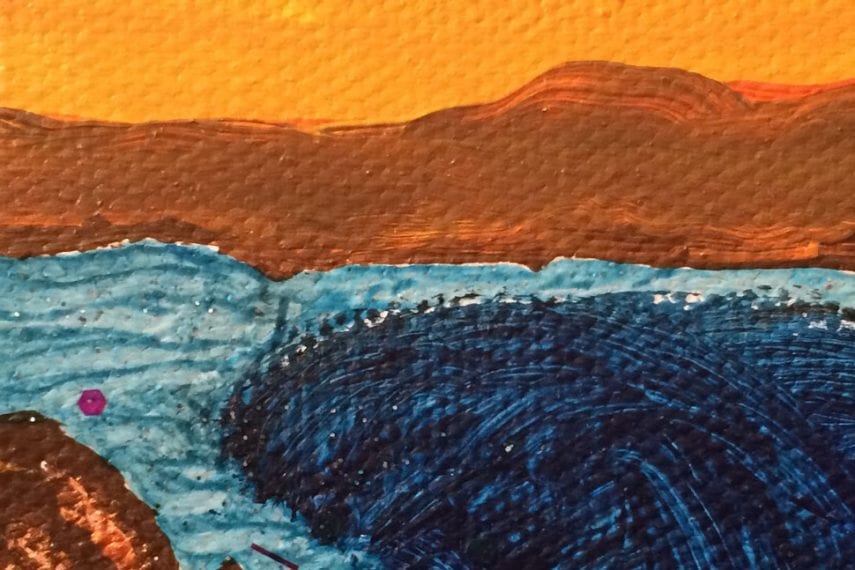Creating Recovery: The Healing Power of Art Therapy in Addiction Treatment

Art heals. For thousands of years, people have used creative expression to process and externalize both individual and collective turmoil, and the products of this creation are valued as some of our most highly prized cultural artifacts. However, the power of art is not confined to the masters—creative expression is a fundamental part of the human experience and its power is increasingly being recognized in therapeutic settings. For people in addiction treatment, formalized art therapy can be integral to the healing process, by allowing you to not only reach new levels of self-understanding and reflection, but by using your creative process as a springboard for social connection and revitalization.
Deepening Self-Understanding
In order to heal from addiction, we must both understand the sources of our addictive drive and process the pain addiction has caused us, to reach a deeper level of understanding. By going beyond the limits of language and inviting you to freely express yourself in new, multisensory ways, art therapy opens up the possibilities of self-discovery. Here, you can give concrete form to psychological distress and use the creative process to unlock the subconscious emotions, thoughts, and beliefs that keep you from moving forward, allowing you to see yourself in a new light. Many people find that artistic expression reveals parts of themselves that they were unable to access through verbal therapeutic modalities, and they are able to experience significant breakthroughs as they come to know themselves more fully.
For many addicts, the addictive behavior is driven by an overwhelming desire to alleviate emotional suffering. Through art therapy, you are able to give voice to painful feelings, thoughts, and memories in a healthy and healing way that can be profoundly relieving, and offers a productive outlet for difficult emotions. The process of creating itself can become a way of regulating and improving mood, particularly feelings of depression and anxiety, giving you new avenues for self-care. There also appears to be something inherently pleasurable about art; research has shown that viewing art produces “the same chemical response as love” by triggering the release of dopamine in the brain. Art makes us feel good. Being able to experience non-destructive pleasure, process difficult emotions in a nurturing way, and engage in self-healing is vital to recovery.
Begin Your Recovery Journey Today
866-922-1350Crafting Empowerment
Art therapy isn’t just a way of processing negative experiences and feelings—it also allows you to see yourself beyond addiction and envision a new future. For many people in recovery, the hardest thing to express is not emotional pain or distressing memories, but hope. This is often particularly true for people who have experienced multiple relapses in the past and fear that they will be unable to break free from the grip of addiction. But the human spirit is remarkably resilient, and recovery itself is an inherently hopeful act. Art therapy can give you the tools to visually represent your goals, dreams, and healing mantras in the form of creative affirmations that help guide your recovery. Here, you can focus not only on what you are trying to end, but on what you want to begin, what you want to gain, and the person you want to become. People often find that they return to the works they make again and again throughout the healing process to gain strength, clarity, and resolve as they rebuild their lives.
The creative process can create a sense of joy and freedom that reminds you of the possibilities of life without addiction. Through artistic creation, you are able to explore and visualize your authentic self while developing new expressive abilities that can be deeply rewarding. As one recovering addict says:
[T]he arts are how I can reconnect with the world, make a difference and raise awareness of the power of one’s internal resources. They make one aware of the human potential and spirit and that there are many ways to heal, externally and internally. They also raise awareness of gratitude. Every day and moment should be celebrated. Life is a canvas, an open score, a bare stage, waiting for us to join the dance.
While anyone can engage in art therapy and no specific skills are required, many find a sense of purpose and confidence in creative mastery; discovering something that you are good at can be tremendously empowering, whether it is the technical quality of your drawing, the precision with which you create a collage, or the way you can communicate through your artistic output.
The Power of the Group
Sharing both your artistic process and products is an integral part of art therapy groups. By discussing and viewing your work with both the therapist and your peers, you are allowing others to bear witness to your healing process and validate your experiences. This is one of the greatest strengths of the therapy—being able to explore and share your creative and personal discoveries with others fortifies your ability to articulate your emotions, strengthens social bonds, and integrates you in a healing community. As Dr. Cathy Malchiodi writes,
It is this relational aspect that reinforces resilience as a central outcome of art therapy because it is through connection that not only personal strengths, but also reparation and recovery are often realized. Ultimately, sharing one’s story and truth is a key factor not only in recovery, but also in the realization of personal strength and efficacy.
Using creative expression as a forum for both inner reflection and social connection can be vital to your recovery process as you seek to create a life free from addiction. The insights, skills, and confidence you gain through art therapy can be carried beyond treatment and act as a critical catalyst for lasting emotional wellness and sobriety.
Alta Mira offers the highest standard of care for people living with addiction. Our innovative program draws on the most effective clinical and holistic therapies available to create lasting, sustainable healing. Contact us for more information about how we can help you or your loved one.
Art Credit: Alta Mira Alumni






